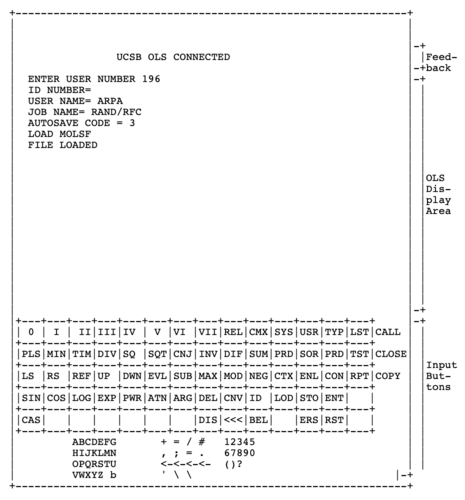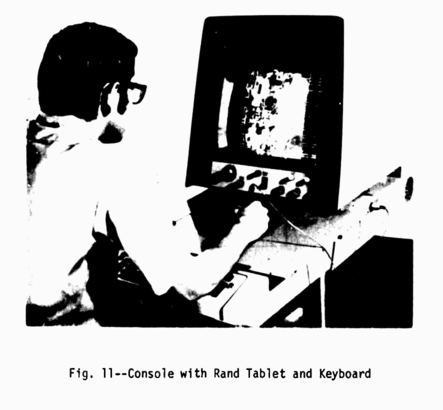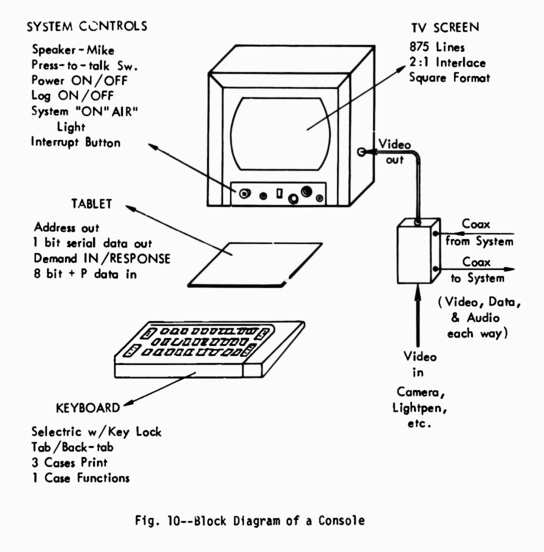RFC-225
by Darius Kazemi, August 13 2019
In 2019 I'm reading one RFC a day in chronological order starting from the very first one. More on this project here. There is a table of contents for all my RFC posts.
On-Line from afar
RFC-225 is titled “RAND/UCSB Network Graphics Experiment”. It's authored by Eric Harslem of Rand and Ron Stoughton of UCSB. It's dated September 13, 1971.
The technical content
For about a month now, programmers at RAND Corporation have been accessing UCSB's On-Line System (OLS) via graphical consoles at the RAND offices.
Specifically, the OLS is being accessed via the Rand Video-Graphics System (VGS), which is equipped with a tablet input. It runs a special program locally that acts as a kind of virtual OLS interface that emulates the second keyboard needed to use the OLS. If you look at the ASCII art diagram you'll see it's divided into three parts:
- a feedback section at the top that tells you what screen you are looking at
- a big middle area that shows the text or the graphical output
- a virtual keyboard, not dissimilar from your phone keyboard, that you're supposed to use a tablet input to type on

(By the way, the figures in the original document are almost certainly not ASCII art. Most of the drawings in the early RFC series were converted to ASCII from their original form as line drawings in the late 1990s. If/when I can dig up the scans, I'll add them here.)
They plan to present the result of this work at the October graphics meeting in the form of both a paper and a film showing its use.
Analysis
We haven't heard from Ron Stoughton since the very earliest days of the Network Working Group! He was one of the original members and his name is listed in RFC-3 as the primary contact for UCSB. This is the first RFC he is listed as an author on, and he will only write one more after this.
Further reading
The Rand Video-Graphics System is described in detail in this 1971 paper.
Here is a poor-quality photo of the system in action, from the paper:

And here's a block diagram of the system, also from the paper:

There are more photos available in this less detailed but higher scan quality paper at the RAND website.
How to follow this blog
You can subscribe to this blog's RSS feed or if you're on a federated ActivityPub social network like Mastodon or Pleroma you can search for the user “@365-rfcs@write.as” and follow it there.
About me
I'm Darius Kazemi. I'm an independent technologist and artist. I do a lot of work on the decentralized web with ActivityPub, including a Node.js reference implementation, an RSS-to-ActivityPub converter, and a fork of Mastodon, called Hometown. You can support my work via my Patreon.